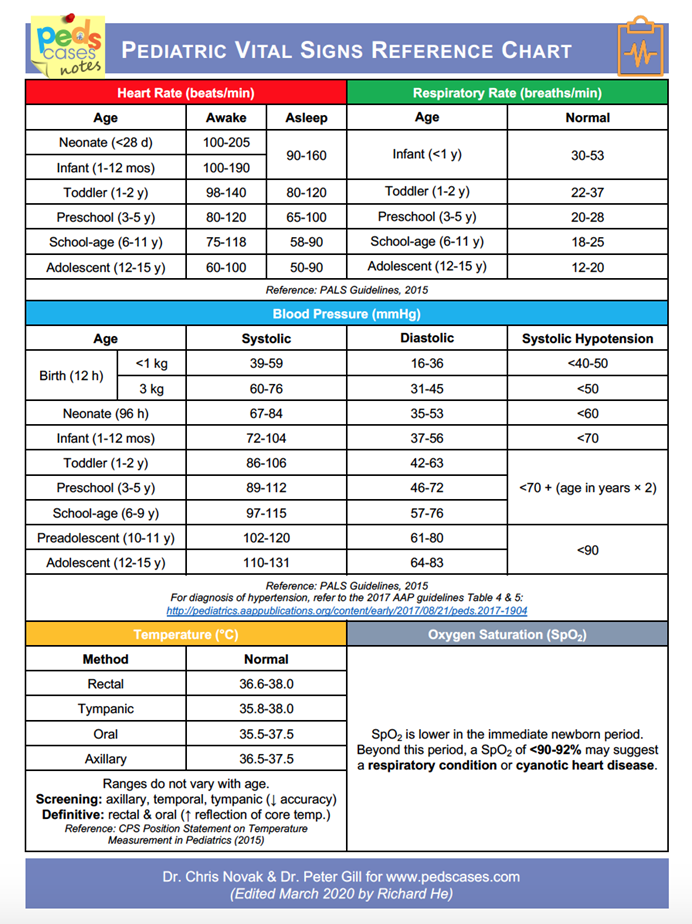A nurse is collecting data from a 4-year-old child. Which of the following findings should the nurse expect?
Heart rate 110/min
Capillary refill greater than 3 seconds
Weight gain of 0.9 kg (2 lb) in a year
Respiratory rate 32/min
The Correct Answer is A
A. Heart rate 110/min: A heart rate of 110 beats per minute is within the normal range for a 4-year-old child. The typical heart rate for this age is between 80 to 120 beats per minute.
B. Capillary refill greater than 3 seconds: Capillary refill time should be less than 2 seconds in a healthy child. A refill time greater than 3 seconds may indicate poor perfusion or dehydration, which is abnormal.
C. Weight gain of 0.9 kg (2 lb) in a year: A weight gain of 2 pounds in a year is below the expected range for a 4-year-old. Children in this age group typically gain around 4-5 pounds per year as they grow.
D. Respiratory rate 32/min: The normal respiratory rate for a 4-year-old child is typically between 20 to 30 breaths per minute. A rate of 32/min is slightly elevated and may indicate respiratory distress or other issues.

Nursing Test Bank
Naxlex Comprehensive Predictor Exams
Related Questions
Correct Answer is D
Explanation
A. "I will immediately report irregular respirations." Irregular respirations can be normal in infants, as their breathing patterns are often irregular. Immediate reporting is not typically necessary unless there are other signs of distress.
B. "I will immediately report a respiratory rate of 28." A respiratory rate of 28 is low for a 1-month-old infant, but immediate reporting depends on the overall clinical picture and other signs of distress. Normal respiratory rates for this age are usually between 30-60 breaths per minute.
C. "I will count the baby's respirations for 30 seconds and multiply by two." While this method is used for older children and adults, it’s not ideal for infants due to their irregular breathing patterns. Counting for a full minute provides a more accurate assessment.
D. "I will count the baby's respirations by observing abdominal movements." This is correct. In infants, respiration is primarily diaphragmatic, making abdominal movements a reliable indicator of respiratory rate.
Correct Answer is D
Explanation
A. Stand above the child's eye level when speaking: The nurse should be at eye level with the child to facilitate lip reading and better communication.
B. Talk directly into the child's impaired ear: This can be uncomfortable and is not effective. The nurse should speak directly to the child, allowing them to use any residual hearing or hearing aids.
C. Speak loudly to the child: Speaking loudly can distort the sounds and make understanding more difficult for hearing-impaired individuals.
D. Speak slowly while facing the child: Speaking slowly and facing the child ensures that they can read lips and facial expressions, which aids in understanding.
Whether you are a student looking to ace your exams or a practicing nurse seeking to enhance your expertise , our nursing education contents will empower you with the confidence and competence to make a difference in the lives of patients and become a respected leader in the healthcare field.
Visit Naxlex, invest in your future and unlock endless possibilities with our unparalleled nursing education contents today
Report Wrong Answer on the Current Question
Do you disagree with the answer? If yes, what is your expected answer? Explain.
Kindly be descriptive with the issue you are facing.
